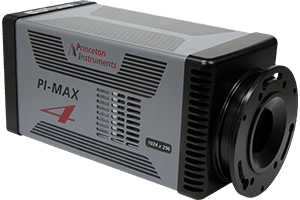<500 psec Gated Imaging ICCD and emICCD Cameras

PI-MAX® 4
- <500 psec gating
- 1 MHz sustained intensifier gating repetition rate
- >10,000 spectra per second
- Ultimate sensitivity
- Highest linearity with emICCD option
The PI-MAX® 4 improves time-resolved imaging and spectroscopy with either intensified CCD (ICCD) or intensified EMCCD (emICCD) systems. With a wide range of applications, there is no other ICCD that can match the performance and flexibility of the PI-MAX 4.
